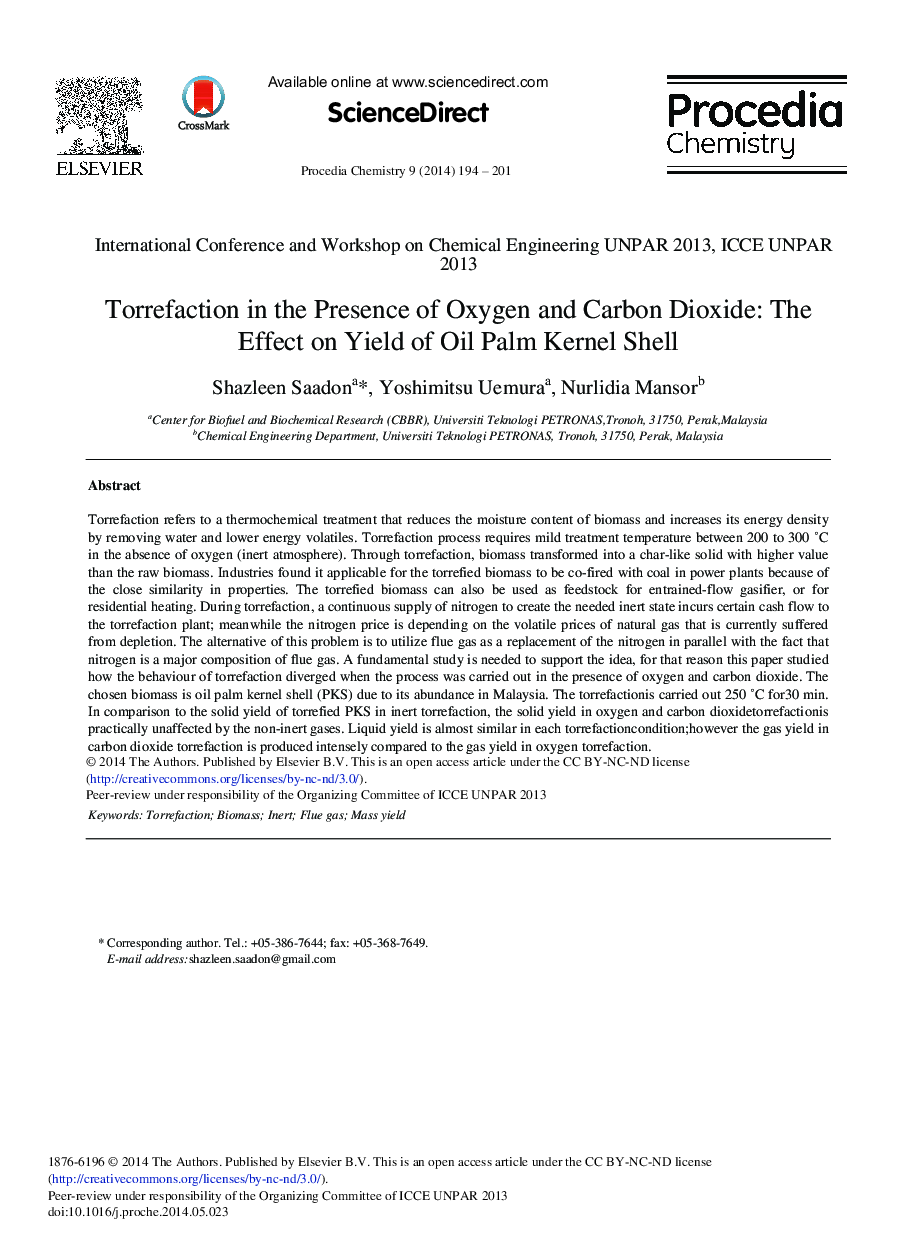| Article ID | Journal | Published Year | Pages | File Type |
|---|---|---|---|---|
| 240031 | Procedia Chemistry | 2014 | 8 Pages |
Torrefaction refers to a thermochemical treatment that reduces the moisture content of biomass and increases its energy density by removing water and lower energy volatiles. Torrefaction process requires mild treatment temperature between 200 to 300 ˚C in the absence of oxygen (inert atmosphere). Through torrefaction, biomass transformed into a char-like solid with higher value than the raw biomass. Industries found it applicable for the torrefied biomass to be co-fired with coal in power plants because of the close similarity in properties. The torrefied biomass can also be used as feedstock for entrained-flow gasifier, or for residential heating. During torrefaction, a continuous supply of nitrogen to create the needed inert state incurs certain cash flow to the torrefaction plant; meanwhile the nitrogen price is depending on the volatile prices of natural gas that is currently suffered from depletion. The alternative of this problem is to utilize flue gas as a replacement of the nitrogen in parallel with the fact that nitrogen is a major composition of flue gas. A fundamental study is needed to support the idea, for that reason this paper studied how the behaviour of torrefaction diverged when the process was carried out in the presence of oxygen and carbon dioxide. The chosen biomass is oil palm kernel shell (PKS) due to its abundance in Malaysia. The torrefactionis carried out 250 ˚C for30 min. In comparison to the solid yield of torrefied PKS in inert torrefaction, the solid yield in oxygen and carbon dioxidetorrefactionis practically unaffected by the non-inert gases. Liquid yield is almost similar in each torrefactioncondition;however the gas yield in carbon dioxide torrefaction is produced intensely compared to the gas yield in oxygen torrefaction.
